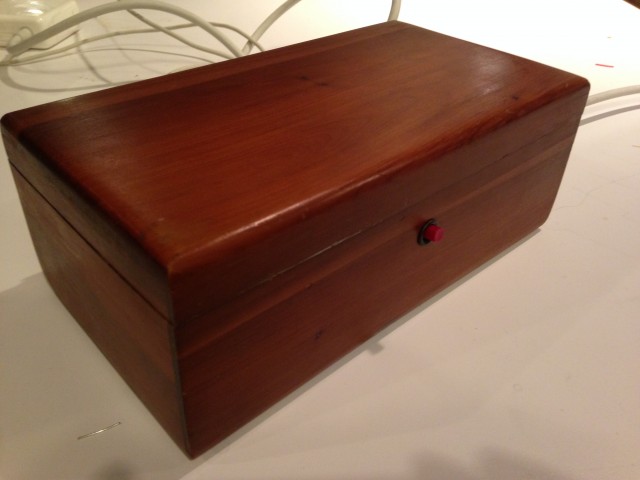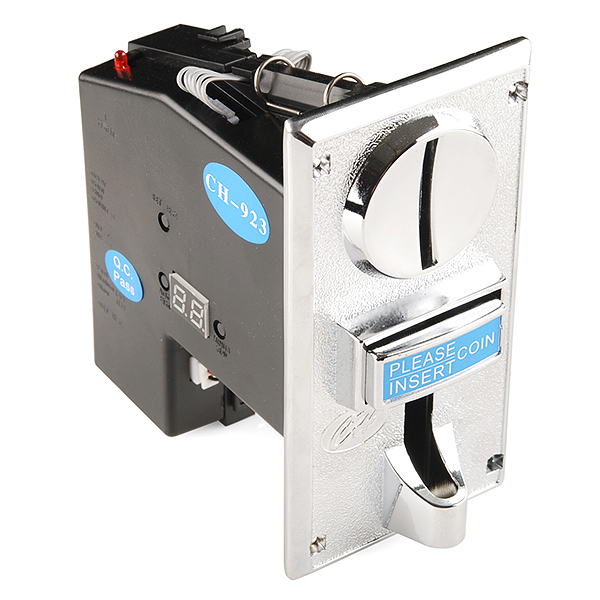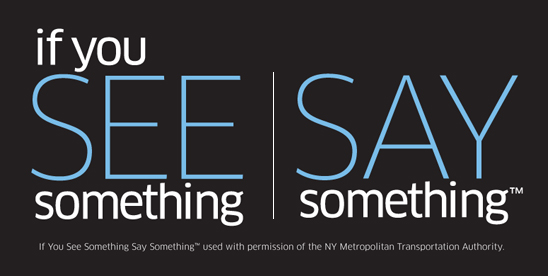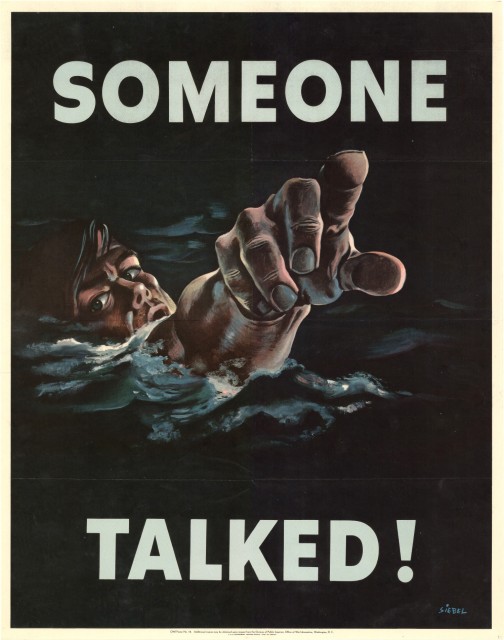I’ve purchased a new box for my Memento Mori project.

I spent a few hours today trying to get the lid of the box to slowly rise using a servo.

Unfortunately the servos I have lying around aren’t quite strong enough, so I ordered a new one with greater torque which I hope will do the trick.
In the meantime I spent some time playing with ideas for the mechanism that will open the box. At this point I have three options that I’m evaluating.
One: a distance sensor. I was initially most attracted to this option. The idea here is that the fortune-recipients approach the box, and as they reach out the box begins to open up in one fluid motion. Here’s a video of me implementing a crude version of what I’m imagining. In the first part of the video I’m experimenting with sensor values and smoothing, in the second part the servo is opening a box when a hand approaches.
[vimeo http://vimeo.com/77942468 w=640]
I love the playfulness of this interaction but I think it lacks intentionality and is too chaotic for this project. I might want to use the idea again in something else. For example, I could imagine a wall with hundreds of tiny boxes on shelves that each open and shut as visitors get close – something that would be evocative of chained dogs snapping at unwelcome guests.
Two: a simple button embedded on the outside of the box. There’s even a hole already there…

This seems like a reasonable option. I like how well the button fits into the enclosure I’ve picked. There’s nothing particularly exciting about a button, but it’s straightforward, fairly intuitive, and hopefully less prone to user error/confusion.
Three: a coin-op mechanism, pictured below.

I have one of these but haven’t hooked it in yet. Again, I like the straightforwardness of this option, and it’s legibility. For me it recollects coin-op fortune telling machines that I’ve seen in the past, so it doesn’t seem like the interaction would be completely out of left field. Generally speaking I want to strike a balance in this project between legibility and the delight that comes from an expected occurrence.








